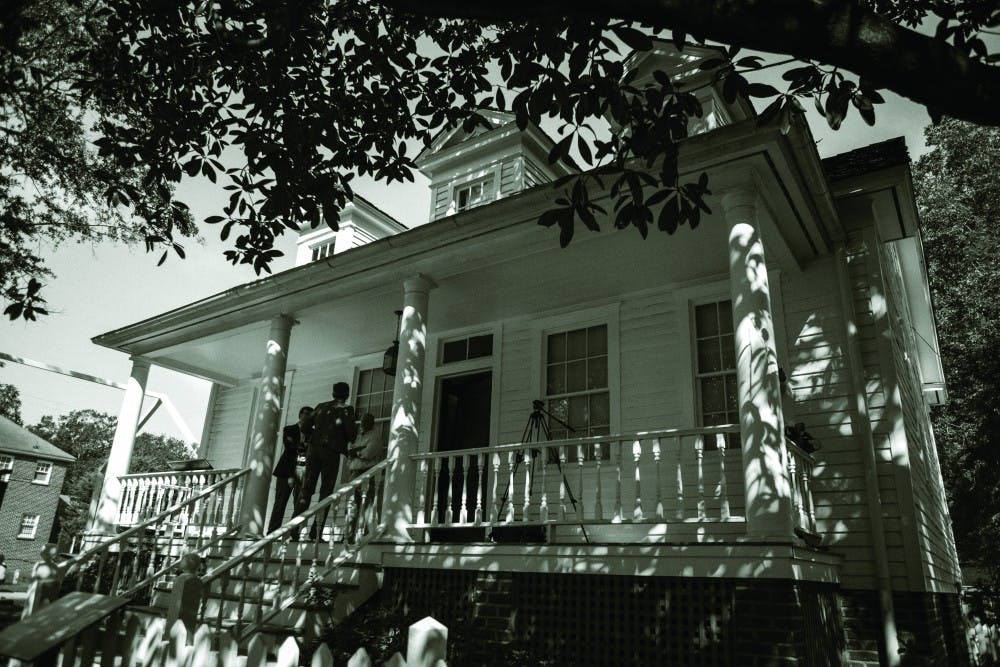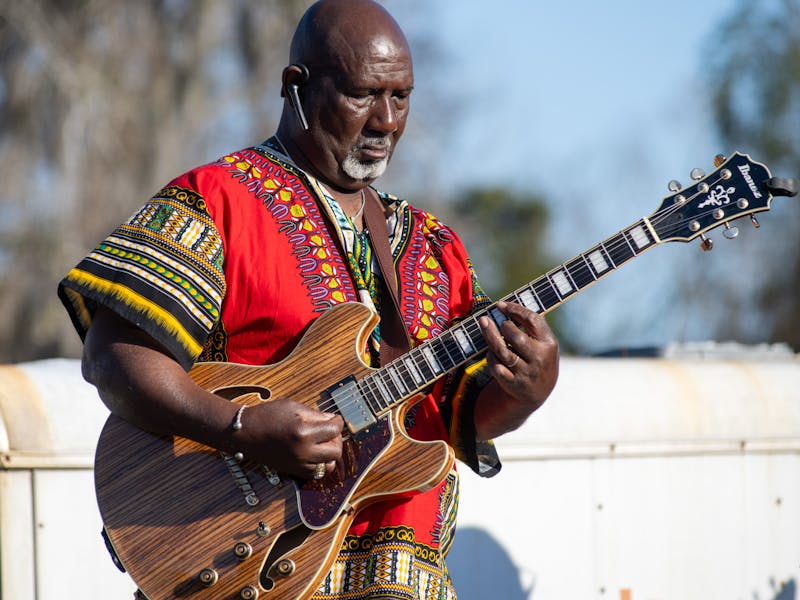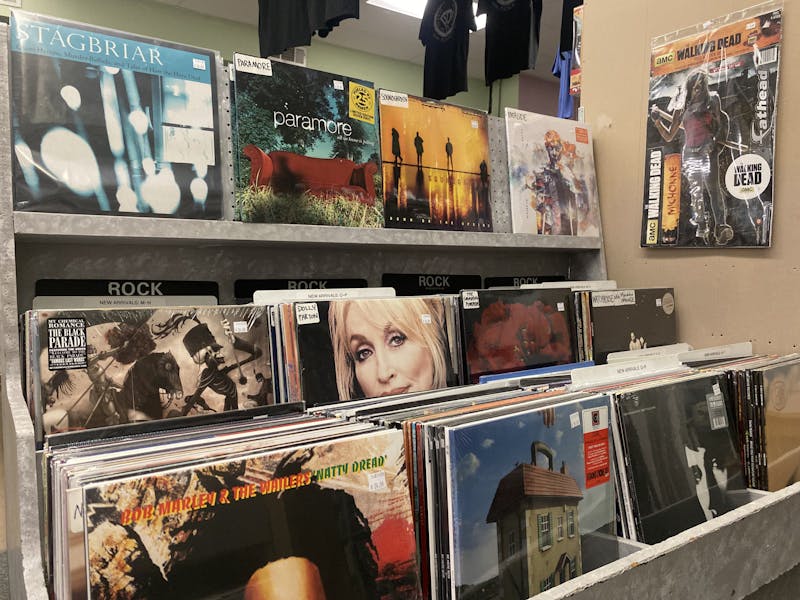A loaded pistol. A condom wrapper. Two-hundred years’ worth of bottle caps. Skin lightener. Three pet burials. The intact base of an incandescent lightbulb. Children’s toys. Bones. The relics of past lives don’t just remove themselves from the ground. That’s Jakob Crockett’s job.
Over the last 10 years, Historic Columbia, a non-profit preservationist organization, has worked to reconstruct the story of one of Columbia’s most prominent African-American families: the Mann-Simons site. Crockett and his ever-changing team of archaeologists have tilled the soil of this historic home, looking for the answer to a single question: What happened here?
As it turns out, a great deal. At the corner of Marion and Richland streets in downtown Columbia stands the last surviving home owned by free African-Americans in the city. This land, this house and the foundations unearthed by Crockett shepherded generations of African-Americans through the Civil War, Reconstruction, Jim Crow and the desegregation movement of the 1960s.
The land belonged originally to two former slaves from Charleston, Celia Mann and her husband, Ben Delane. Celia was born in 1799 and migrated to the midlands by the late 1830s. Ben, after purchasing his freedom, purchased Celia and married her. Celia was a midwife and well-liked member of the community. Her obituary describes her as “well-respected,” an unusual descriptor for a black woman in the pre-war South. Celia and Ben had a daughter, Agnes, and it was Agnes who built the home now operated as a museum by Historic Columbia.
How could a woman like Celia, living in a deeply divided, segregationist climate, make a name for herself? The recent reinterpretation of the Mann-Simons Site aims to answer this exact question.
When I arrive at the Mann-Simons Site — a home that almost didn’t survive the last century — rain is pouring and the lights inside, already low, flicker as thunder rolls. There are boxes stacked high along the walls and display stands sit empty. Spotlights illuminate vacant pedestals. It looks as if the family is moving back in after a long time away. The museum is set to reopen to the public in a little less than a week from now at the 38th annual Jubilee.
The decade-long reinterpretation has finally come to fruition in the panels and artifacts and screens of the house museum. The purpose of a museum is to tell storieswe have never heard and ones that we need to hear again and again. They create a sacred space for the maintenance of narrative and shoulder the burden of truth. Historic Columbia’s reinterpretation of the story of Mann-Simons places the family’s community role at the forefront.
I’m reading the panel about a churchyard duel when a man emerges from the basement and scares me half to death.
It’s John Sherrer, director of cultural resources at Historic Columbia and possessor of encyclopedic historical knowledge about Columbia. This house is Sherrer’s responsibility. He invites me into the front room where there’s a folding table and countless power tool cords. He brushes the dust from his chair before we sit down. Two firetrucks fly by outside and thunder rolls.
Back in 1970, Sherrer tells me, when the house was threatened by the Columbia Housing Authority, the African-American community rallied for preservation. During that time, the Mann-Simons site became a cultural hub, deeply interwoven with the African-American historical narrative of the city.
“You can’t have a history of Columbia without an African-American history,” he says.
Massive, white metal frames tower over the site in a profound and sheltering way. The ghost structures are meant to give a greater sense of the community that occupies the site, detailing buildings that were “lost” over time. From the front window where we sit, you could reach out and touch the frame of the former corner store next door. Three more structures line up on the edge of what is now a parking lot out back and three more ghost forms tessellate themselves in the remaining spaces. What visitors have found difficult to comprehend in the past, Sherrer tells me, is the close proximity of these lost buildings to the main house.
It was Crockett’s research that helped recreate the spatial configuration of this small, ghostly neighborhood.
“The types of artifacts here ran the gambit honestly from the most mundane to the most intriguing,” Sherrer says. “Glass, nails, wood, brick — you find that a lot, but you don’t often find pet burials, a loaded hand gun from the turn of the century … skin lightener, cosmetic products. You don’t find a condom case. Just human stuff that’s often discarded.” The overarching theme, stressed in the new exhibit, is the humanity of the site. The reinterpretation emphasized again and again the roles of individuals who lived on the land. Who worked, suffered, found strength and strived here. The endeavor is more than a load of old bones — it’s a revealing insight into the compassion of the community at large.
The research Crockett did has allowed Historic Columbia to trace how the family acquired new technology over the years. “That speaks volumes to the family, but also really helps to dispel often entrenched within the public assumptions of race or class,” Sherrer says. “You automatically think because this family lives in a house this size or in this neighborhood or because the family was maybe middle class or African-American or whatever then this. Well, no, it makes the story much, much more complex. The community becomes more nuanced, and it’s a human story.”
That sums up the mission of the Mann-Simons Site: to tell a story — many stories — that continues to this day. Mann-Simons combats the arcane stereotype that museums are shrines to the past. Instead, the new exhibit places the house and its uses into the context of the present. What’s more, Mann-Simons hosts the annual festival of black history and culture in Columbia: the Jubilee. The Jubilee celebrates that narrative with performances by musicians, dancers and historical interpreters. The day-long event draws massive crowds every year.
One short week after I toured the unfinished museum, the Jubilee gets underway in full swing. Hundreds of people gather on the lawn, in the street and on the porch listening to music, buying crafts and swapping stories. It’s this community that the house was made to foster. From my vantage point on the back porch, I watch old friends catch up.
“A lot of people come to Jubilee, and we won’t see them again until the next year,” Sherrer says. “That’s something we really want to change. The Mann-Simons Site was a place for groups to get together.”
There’s a community space in the basement that Historic Columbia hopes groups will use in order to continue the home’s legacy.
“It’s a conversation starter on things that were important historically, but also things that are important now. Let’s talk about class. Let’s talk about race. Let’s talk about issues in our community. Violence. Let’s talk about literacy, land use, what gets preserved and what doesn’t get preserved,” Sharer says.
Upstairs, visitors filter in and out of the museum with the same comfort and ease as they would their own homes. From one of the exhibit’s four interactive screens, the choir sings a rendition of "The Train is Bound For Glory." One of the docents leans over and tells me the whole crew was singing it last night while they were putting the final touches in place.
As it should be, I thought, a house full of song.
The past is something that’s already happened. History is the stories we tell to keep it alive. Mann-Simons has a lot more singing to do.



